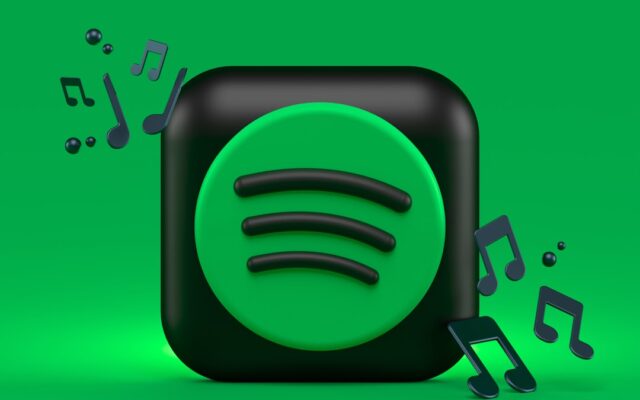When I sign in to Spotify and press play on my favorite song, I hardly think about what’s going on under the hood. The music just plays — smoothly, immediately, with not a hiccup. But as a backend systems nut, I found myself asking: how is it that Spotify can serve tens of millions of users all simultaneously streaming music without a glitch?
So down the rabbit hole I went. What I found was an amazing compendium of cloud native design, microservices, and intelligent caching that makes Spotify one of the most robust and highly scaled music streaming platforms in the world.
In this post, I want to walk you through what I’ve learnt about the Spotify back-end, how it achieves buffer-free streaming, and what it’s taught me about building scalable systems.
Inside Spotify’s Future-Facing Infrastructure From an Aging On-Prem Data Center to the Cloud
Spotify used colocated data centers for its infrastructure until 2016 when it started its large-scale migration to Google Cloud Platform (GCP). This wasn’t a decision to save a few dollars on hardware. It was about welcoming flexibility, agility and the ability to scale.
In a cloud-native universe, applications are pared down into small, more manageable microservices. Instead of a monolithic codebase, Spotify’s backend is a collection of hundreds of services, each serving a single purpose. There is a service for user authentication, a service for generating playlists, a service for searching, and so on.
This microservices architecture enables separate teams to work independently, iterate faster, and scale individual parts of the app as necessary. If it’s, say, millions of people searching the term “Taylor Swift” all at once, only the search service needs to scale up, not the entire application.
Kubernetes: Spotify’s Orchestrator of Choice
Once you have hundreds of microservices running, you need something to coordinate them. That’s where Kubernetes comes in.
Kubernetes is employed by Spotify to orchestrate containerized applications on its cloud infrastructure. Each microservice runs inside a container, and Kubernetes manages to deploy, scale, and ensure they stay healthy, automatically.
I’ve worked with Kubernetes in my own projects, but Spotify’s scale is a whole another animal. They’ve developed custom tools such as Tingle (for job scheduling) and Backstage (a developer portal) to control their internal microservice constellation.
What they were up to with service discovery and auto-scaling I found the most interesting. When demand soars, say, with an album release, Guess spins up more containers in Kubernetes, without buffering or going down.
Fast Audio Serving: Caches and Edges
Here’s the bit that I found particularly mind-blowing.
To effectively and reliably transfer audio, Spotify uses a typical combination of Content Delivery Networks (CDNs) and a decoupled P2P inspired caching system (yes, in spirit, like BitTorrent).
Every time you stream a song, Spotify first determines whether the audio file is cached locally on your device, then on nearby edge servers, and fetches it from the central cloud if necessary. This hierarchical caching model extreme minimized latency.
Spotify also chunks audio files — about 15 seconds at a time. These chunks are downloaded in parallel by your client, which buffers a few seconds ahead, making playback feel instantaneous. If there’s a hiccup on one route, a different mirror server takes up the slack. That redundancy is what makes Spotify feel oh-so silky.
Handling Real-Time Events and Recommendations
Discover Weekly is one of my favorite Spotify elements. It always feels like magic. But under that hood, complex data pipelines run on top of Apache Kafka and Google Dataflow.
Spotify listens to what you listen to in real time (even recognizing an explicit fart). What you skip, what you listen to again, what you don’t listen to, what you move out of the premium line and into a playlist for free — it’s all fair game. All of these events are pushed into Kafka, downstream systems then consume them to determine recommendations, update leaderboards, or even to understand fraud.
The publish-subscribe model is used by Spotify to handle these events, often in near real time. On their side, Producers emit events (such as user played a song) and several Consumers subscribe to these events (e.g. recommendation engine, analytics dashboard). It’s a great example of event-driven architecture.
Fighting Downtime with Chaos Engineering
At the scale Spotify operates, failures are a when, not an if. But what amazed me was that they are proactively testing their system’s resiliency with chaos engineering.
As Netflix has its well-known Chaos Monkey, Spotify has internal tools that randomly kill services or introduce latency to see how the system behaves. The goal is to break things intentionally — as safely as possible — so they can shore up areas of weakness before an actual failure occurs.
At my personal backend projects, I have begun thinking the same way: I simulate outages like this to check if the fallback logic does its job. It’s a movement from a mindset of “hope it doesn’t break” to one of “expect it to break and plan accordingly.”
Developer Tools: Spotify’s Internal Stack
Spotify not only leans on open source tools – but also builds their own.
One such tool is Backstage- An open-source platform for managing microservice. It provides their dev teams a unified dashboard on which to set and maintain documentation and apply and monitor APIs, deployment status and more. I recently implemented Backstage in one of my team’s projects — it’s a game changer for keeping everything organized in a microservices world.
They are also using Luigi for orchestrating their data science pipelines. It’s what their ML models are trained, tested, and deployed on a regular basis without human intervention.
Lessons I Took Away
As I checked around in Spotify’s backend, I couldn’t help but admire the engineering ‘feet’ that had gotten it to such massive scale in the first place. But what inspired me even more was their philosophy:
Design for failure: Do not rely on 100% uptime—be prepared for fallbacks and chaos testing.
Decouple everything: Put anything you can in a microservice to decouple it and scale it independently.
Use good caching: Client, edge, and CDN caching is night and day.
Invest in developer experience: Tools such as Backstage get rid of internal friction.
As if I worked at Spotify even (yet?) — hearing about their system has altered the way I go about my projects. If I’m building a simple API, or deploying a hobby app – I’m now thinking more critically about scalability, latency, and observability!
Final Thoughts
Spotify is not just a music streaming app — it’s a course on distributed systems. Their backend is a global scale machine with microservices, Kubernetes, smart caching and real-time analytics.
Each time you get the prompt by clicking on “play” for a nearly instant stream of music, you’re seeing the result of millions of lines of code, dozens of teams working behind the scenes, and a yearslong engineering evolution.
As a backend fanatic, I’m not only intrigued by Spotify’s architecture, I’m even inspired by it. If they can do all this big, how big can I make it and still be pushing myself?
Article by channel:
Everything you need to know about Digital Transformation
The best articles, news and events direct to your inbox
Read more articles tagged:






